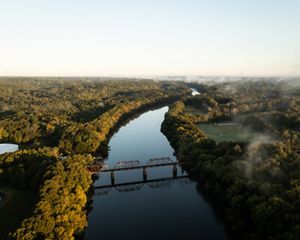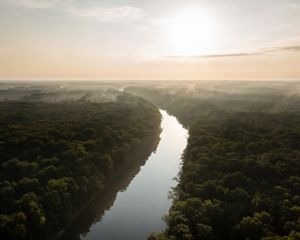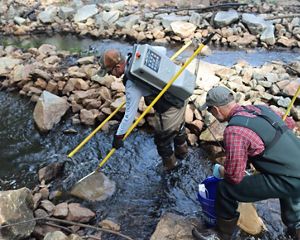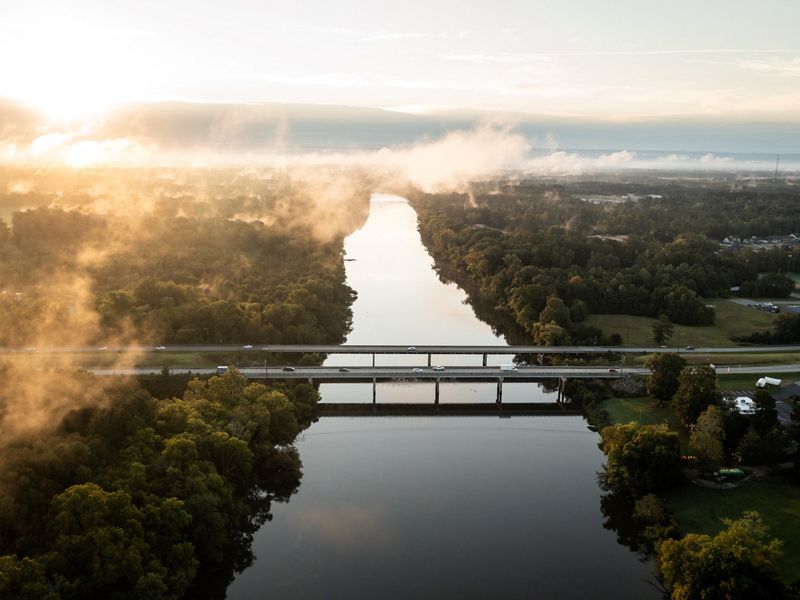
Cape Fear River Sunrise over the Cape Fear River in North Carolina. © FAUNA CREATIVE

Throughout my 20+ years of conservation work, one fish has etched itself into my memory more than any other. It was mid-April—a perfect spring day with a cool breeze and bright sunshine. I was on the Cape Fear River with a passionate team of researchers from the University of North Carolina at Wilmington.
Our objective was to tag large adult sturgeon on their way up the river to better understand their spawning areas, and to find out whether they were able to pass the locks and dams. These structures create physical and hydraulic barriers that make it difficult or impossible for fish to go upstream without some assistance. I had no idea that this day would lead to the capture of the largest fish of my life.
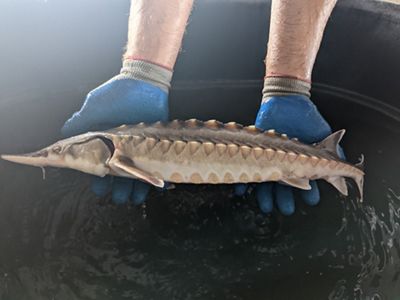
Sturgeons are a remarkable family of fish that have persisted for millions of years. Atlantic sturgeon (Acipenser oxyrinchus oxyrinchus) inhabit coastal waters of the eastern United States and Canada. These massive fish—reaching lengths of up to 14 feet, weighing hundreds of pounds, and living for decades—have low reproductive rates, making it difficult for their populations to recover from intense historical fishing pressure.
With threats such as overharvest, habitat destruction, and pollution, it’s no surprise they are listed as an endangered species in most U.S. waters. Some populations have shown improvement since a harvest moratorium was enacted in 1998, allowing these slow-growing fish to make it to reproductive age, but only time will tell if the species can fully recover.

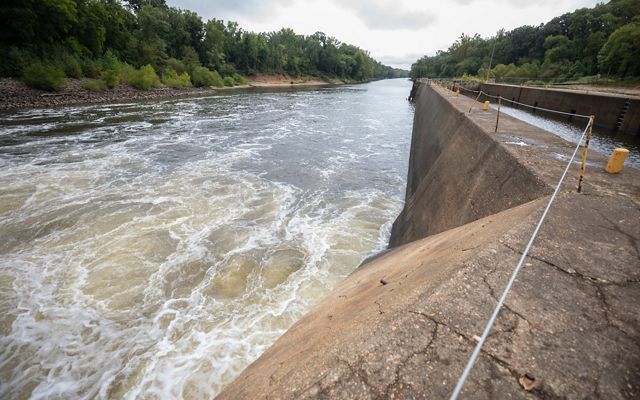
During that wonderful spring day, we set our large net after a quick sonar scan to avoid submerged debris. After nearly an hour of soak time, I noticed a float bobbing. I turned to Jake Mathews, the lead researcher and a PhD student, and asked, “Is that what I think it is?” He replied, “It very well could be, but we won’t know for sure unless we bring in the net.”
With hearts pounding, we began to haul in the net, carefully coiling the floats, weights, and mesh. Suddenly, we felt one tug, and then another. The tension in the net was far beyond what smaller fish could generate—we’d definitely caught something of considerable size. As the tugging became more intense and we edged closer, thick white barbels and a broad snout emerged from the water’s surface. It was a behemoth: an Atlantic sturgeon nearly 7 feet long.
We gently lifted it into an oxygenated livewell with flowing river water, took measurements, collected a tissue sample, and checked its gender (it was a female!). We implanted an acoustic transmitter into her body cavity, which will give the research team 10 years of valuable scientific data. Her release was marked by a huge, loud tail smack on the water’s surface that splashed the boat.
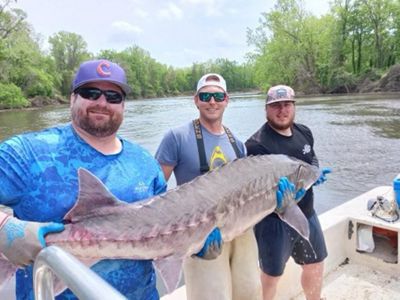
Out of 34 total adults caught over the past four years on the Cape Fear, this was the only verified female, making her data incredibly valuable. For example, she has returned to the same spawning location for three successive years, which is intriguing because this species typically skips a year or more between spawning runs. All the data collected during the study, including confirmed eggs, has significantly advanced our understanding of the species and informed conservation strategies on the Cape Fear River.
TNC has funded work to restore river connectivity, improve water quality, and protect critical habitats—all aimed at giving aquatic species like sturgeon a fighting chance in the modern world. TNC is also an important part of fish passage evaluation and tagging on the Cape Fear, collaborating with local communities, scientists, and state and federal agencies to ensure these ancient fish can complete their migrations and reproduce successfully.
This fish is now part of an important conservation success story. She will continue to provide valuable data for years to come, helping us understand how to better protect her species. I am incredibly grateful to have been part of this research effort. Ancient survivors of the animal kingdom still roam the Earth, and I was there to catch a special one.
